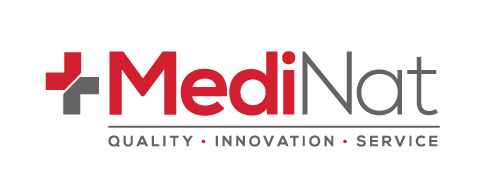
Implementing an Effective Drug Testing Program for Australian Employers
Share
An effective workplace drug and alcohol testing procedure is a key element in maintaining a safe, productive, and compliant work environment, particularly in safety-sensitive industries like construction, mining, logistics, aviation and manufacturing.
If you are considering implementing or refining your organisation’s drug testing program, this article provides a practical, step-by-step guide to planning, implementing, and managing a comprehensive approach to workplace drug and alcohol testing.
Why Implement a Drug and Alcohol Testing Program?
Workplace drug and alcohol testing is not about “catching employees”. It is about ensuring a safe working environment and supporting health and wellbeing, while meeting any regulatory requirements for your specific industry.
A structured testing program can:
- Reduce the risk of incidents and injuries
- Promote a culture of accountability and care
- Support early identification of employees who may need help
- Demonstrate compliance with WHS obligations and industry standards
Step 1: Develop a Clear Policy
The foundation of every effective drug and alcohol testing program is a clear and fair Drug and Alcohol Policy. Your policy should be developed in consultation with legal advisors, workplace safety officers, and where appropriate, employee representatives.
Key elements of a workplace drug and alcohol testing procedure include:
- Purpose and scope – Why the policy exists, who it applies to, and under what circumstances
- Testing types and triggers – Pre-employment, random, post-incident, for-cause, and return-to-duty testing
- Substances tested for – Typically includes common drugs of abuse and alcohol, and as a minimum the relevant Australian/New Zealand standards.
- Consequences and procedures – Clear steps for managing positive results, refusals, or non-compliance
-
Confidentiality and support – Privacy protocols and referral pathways for employee assistance
Step 2: Choose the Right Testing Methods and Kits
Selecting the right tools for the job is critical. The testing method you choose—urine, oral fluid, or breath alcohol—should reflect your policy, budget, and the operational needs of your organisation.
Consider:
- Urine drug tests – Widely used, cost-effective, and suitable for detecting historical use
- Oral fluid (saliva) tests – More effective for detecting recent use; often preferred in safety-critical environments
-
Breathalysers – Immediate alcohol detection with instant results; essential for “fit-for-duty” checks at the start of shifts.
Working with an experienced and reliable supplier is key to ensuring consistent, compliant, and high-quality testing outcomes.
Step 3: Train Your People
If you are conducting testing in-house, it’s vital that the staff responsible for sample collection and interpretation are properly trained and certified in HLTPAT005 Collect Specimens for Drugs of Abuse Testing. Training should cover:
- Chain of custody procedures
- Correct sample collection and handling
- Understanding limits of detection
- Interpreting results and handling Not-Negative test results
- Managing employee interactions and documentation
Certification in HLTPAT005 requires recertification every two years through a Registered Training Organisation.
Step 4: Communicate Clearly with Staff
Transparency builds trust. Before launching your program, clearly communicate:
- The purpose of the policy
- When and how testing will take place
- Employees’ rights and responsibilities
- Confidentiality safeguards
- Where they can go for support
Consider holding information sessions or including this information during induction and training programs.
Step 5: Monitor, Review, and Improve
Once your drug and alcohol testing program is in place, it’s important to track outcomes and review your approach regularly. Are the procedures working as intended? Are detection rates changing? Are there any patterns in your detection? Do employees feel supported?
Collecting data (such as number of tests performed, positive rates, and referral outcomes) helps you identify trends and opportunities to improve safety or provide better support to your team.
Want More In-Depth Guidance?
We’ve created a FREE downloadable Reference Magazine packed with detailed information on:
- Choosing the right drug testing kits
- Legal and Regulatory considerations and Australian/New Zealand Standards
- Best-practice procedures for different testing types
- Policy Guidelines and checklist
Download your copy of the Reference Magazine here to support a successful and compliant workplace drug and alcohol testing procedure.
Frequently Asked Questions
What is the first step to implementing a drug testing program?
The foundation of any effective program is a clear, fair, and comprehensive Drug and Alcohol Policy developed in consultation with legal and safety experts.
What kind of drug tests are used in the workplace?
Common methods include urine drug tests for historical use, oral fluid (saliva) tests for recent use, and breathalysers for immediate alcohol detection.
Do staff need special training to conduct tests?
Yes, staff responsible for in-house testing should be certified in HLTPAT005 Collect Specimens for Drugs of Abuse Testing to ensure proper procedures are followed.
Need help finding the right kits or setting up your program? Get in touch with the team at Medinat for expert advice and reliable supply of certified drug and alcohol test kits across Australia.
Phone: 1300 725 520
Email: sales@medinat.com.au
Online: Contact service click here
Ready to take the next step? Browse our complete range of certified saliva, urine and breathalyser test kits and them delivered directly to you.
Shop now: https://www.medinat.com.au
